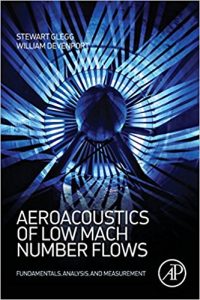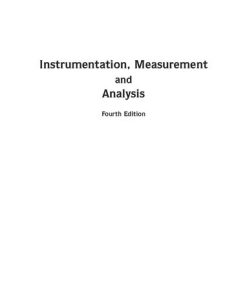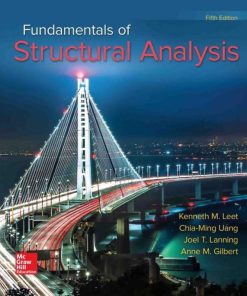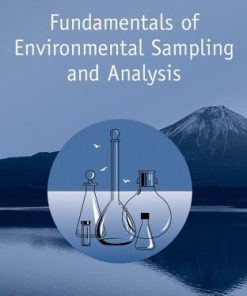Aeroacoustics of Low Mach Number Flows: Fundamentals, Analysis and Measurement 1st edition Stewart Glegg
$50.00 Original price was: $50.00.$25.00Current price is: $25.00.
Aeroacoustics of Low Mach Number Flows: Fundamentals, Analysis and Measurement – Ebook Instant Download/Delivery ISBN(s): 9780128096512,0128096519

Product details:
- ISBN-10 : 0128096519
- ISBN-13 : 978-0128096512
- Author(s): Stewart Glegg, William Devenport
Aeroacoustics of Low Mach Number Flows: Fundamentals, Analysis, and Measurement provides a comprehensive treatment of sound radiation from subsonic flow over moving surfaces, which is the most widespread cause of flow noise in engineering systems. This includes fan noise, rotor noise, wind turbine noise, boundary layer noise, and aircraft noise.
Beginning with fluid dynamics, the fundamental equations of aeroacoustics are derived and the key methods of solution are explained, focusing both on the necessary mathematics and physics. Fundamentals of turbulence and turbulent flows, experimental methods and numerous applications are also covered.
The book is an ideal source of information on aeroacoustics for researchers and graduate students in engineering, physics, or applied math, as well as for engineers working in this field.
Table contents:
Part 1: Fundamentals
1: Introduction
- Abstract
- 1.1 Aeroacoustics of low Mach number flows
- 1.2 Sound waves and turbulence
- 1.3 Quantifying sound levels and annoyance
- 1.4 Symbol and analysis conventions used in this book
2: The equations of fluid motion
- Abstract
- 2.1 Tensor notation
- 2.2 The equation of continuity
- 2.3 The momentum equation
- 2.4 Thermodynamic quantities
- 2.5 The role of vorticity
- 2.6 Energy and acoustic intensity
- 2.7 Some relevant fluid dynamic concepts and methods
3: Linear acoustics
- Abstract
- 3.1 The acoustic wave equation
- 3.2 Plane waves and spherical waves
- 3.3 Harmonic time dependence
- 3.4 Sound generation by a small sphere
- 3.5 Sound scattering by a small sphere
- 3.6 Superposition and far field approximations
- 3.7 Monopole, dipole, and quadrupole sources
- 3.8 Acoustic intensity and sound power output
- 3.9 Solution to the wave equation using Green’s functions
- 3.10 Frequency domain solutions and Fourier transforms
4: Lighthill’s acoustic analogy
- Abstract
- 4.1 Lighthill’s analogy
- 4.2 Limitations of the acoustic analogy
- 4.3 Curle’s theorem
- 4.4 Monopole, dipole, and quadrupole sources
- 4.5 Tailored Green’s functions
- 4.6 Integral formulas for tailored Green’s functions
- 4.7 Wavenumber and Fourier transforms
5: The Ffowcs Williams and Hawkings equation
- Abstract
- 5.1 Generalized derivatives
- 5.2 The Ffowcs Williams and Hawkings equation
- 5.3 Moving sources
- 5.4 Sources in a free stream
- 5.5 Ffowcs Williams and Hawkings surfaces
- 5.6 Incompressible flow estimates of acoustic source terms
6: The linearized Euler equations
- Abstract
- 6.1 Goldstein’s equation
- 6.2 Drift coordinates
- 6.3 Rapid distortion theory
- 6.4 Acoustically compact thin airfoils and the Kutta condition
- 6.5 The Prantl–Glauert transformation
7: Vortex sound
- Abstract
- 7.1 Theory of vortex sound
- 7.2 Sound from two line vortices in free space
- 7.3 Surface forces in incompressible flow
- 7.4 Aeolian tones
- 7.5 Blade vortex interactions in incompressible flow
- 7.6 The effect of angle of attack and blade thickness on unsteady loads
8: Turbulence and stochastic processes
- Abstract
- 8.1 The nature of turbulence
- 8.2 Averaging and the expected value
- 8.3 Averaging of the governing equations and computational approaches
- 8.4 Descriptions of turbulence for aeroacoustic analysis
9: Turbulent flows
- Abstract
- 9.1 Homogeneous isotropic turbulence
- 9.2 Inhomogeneous turbulent flows
Part 2: Experimental approaches
10: Aeroacoustic testing and instrumentation
- Abstract
- 10.1 Aeroacoustic wind tunnels
- 10.2 Wind tunnel acoustic corrections
- 10.3 Sound measurement
- 10.4 The measurement of turbulent pressure fluctuations
- 10.5 Velocity measurement
People also search:
aeroacoustics of low mach number flows 1st
aeroacoustics of low mach number flows
aeroacoustics of low mach number flows pdf
aeroacoustics of low mach number flows fundamentals analysis and measurement
acoustic mach number
You may also like…
Mathematics - Logic
Engineering - Electrical & Electronic Engineering
Instrumentation, Measurement and Analysis 4th Edition Chaudhary Nakra
Romance - Contemporary Romance
Engineering - Civil & Structural Engineering
Fundamentals of Structural Analysis Solution Manual 5th edition Kenneth M. Leet
Physics - Electricity and Magnetism













